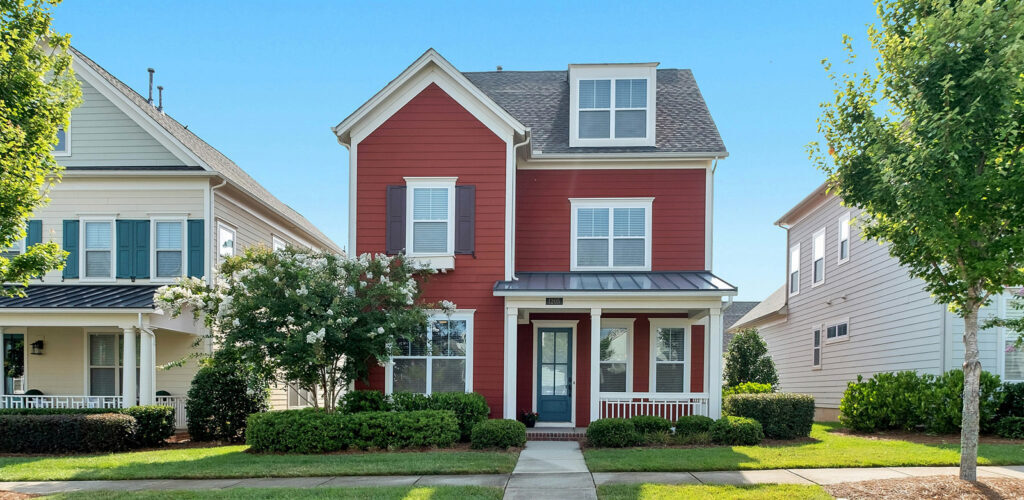What Are the Signs It’s Time to Repaint Your House Exterior?
Key Takeaways
- How to spot the visual and structural warning signs – like peeling paint, fading color, and caulk separation – that mean your exterior needs attention.
- The typical repainting timelines for common siding materials and how Southern Oregon’s wet winters and hot summers can shorten them.
- Simple maintenance habits that can extend the life of your paint job and delay the need for a full repaint.
- Why choosing a local painting professional familiar with Southern Oregon’s climate helps protect your home and save on future repairs.
Your home’s exterior paint isn’t just for looks – it’s the first line of defense against Southern Oregon’s wet winters, hot summers, and year-round UV exposure. Knowing when to repaint can save you money, protect your siding, and keep curb appeal high.
For most homes, a quality exterior paint job typically lasts 5–10 years, although climate and maintenance can reduce this cycle. Below are the clearest signs that it’s time to schedule a repaint.
Why Timely Repainting Matters
Before you look for peeling paint or faded color, it helps to understand why staying on schedule makes a difference. A fresh coat does more than brighten your home-it preserves the structure and protects your investment.
Protects the structure
Fresh paint seals wood, stucco, or fiber cement against moisture and pests.Prevents costly repairs
Repainting before paint failure prevents wood rot and siding damage.Maintains property value
A crisp, clean exterior boosts curb appeal for homeowners, property managers, and HOA boards alike.
Visual Signs It’s Time to Repaint
Some of the most obvious clues are the ones you can see at a glance. Walk around your home on a dry day and check for these telltale changes in the paint surface.
Peeling, Cracking, or Bubbling
Flaking paint is the number-one indicator that the protective layer has failed. Moisture from Southern Oregon’s rainy season seeps behind cracks, causing even more peeling.Fading or Chalking Color
If you notice a powdery residue when you run your hand along the siding, that’s “chalking.” Combine that with color fade – especially on south and west-facing walls exposed to our intense summer sun – and it’s time for a refresh.Exposed Wood or Bare Patches
Any visible bare wood or fiber cement board is an open invitation for water, insects, and mildew.Persistent Stains or Mildew
Dark streaks that return soon after cleaning signal that the paint’s protective surface is compromised.
Physical and Structural Clues
Not every warning sign is purely cosmetic. Some issues show up in the structure itself, and catching them early can prevent expensive repairs.
Caulk Separation
Cracks or gaps around windows, doors, and trim allow water and cold air inside.Warped or Cracked Siding
Indicates water intrusion beneath aging paint.Soft or Spongy Trim Boards
Early wood rot often hides under paint that looks intact from a distance.
Southern Oregon Weather Factors
Our local climate plays a major role in how long exterior paint lasts. Understanding these regional stressors will help you decide when a repaint is more urgent.
Wet Winters
Constant moisture leads to peeling, mildew, and swelling of wood.Hot, Sunny Summers
Strong UV rays bleach pigments and break down paint binders, especially on south-facing sides.Wildfire Smoke & Ash
Summer smoke deposits acidic particles that dull the color and shorten paint life.
Typical Repainting Timelines
While visible wear is the best indicator, general time frames give you a benchmark. Use these averages to plan ahead, then adjust based on your home’s unique exposure.
Wood Siding
Every 5–7 years, depending on exposure.Fiber Cement (Hardie Board)
8–12 years with premium paint.Stucco
5–10 years, with regular inspection for cracks.Painted Brick
12–15 years, but touch-ups may be needed sooner.Trim, Doors, and Windows
Often need repainting every 3–5 years.
Maintenance to Extend Paint Life
A little preventative care can stretch the life of a paint job by several years. Simple seasonal habits help you stay ahead of costly full repaints.
Annual Gentle Washing
Removes dirt, pollen, and mildew before they damage paint.Trim Back Vegetation
Keeps moisture away from siding and improves airflow.Touch Up Chips Early
Small fixes prevent bigger issues and delay full repaints.
How Pacific Home Painting Can Help
When it’s time to repaint, partnering with a local team familiar with our climate can make all the difference. Here’s what our crew offers homeowners, property managers, and HOA boards.
Conducts free, no-obligation quotes (click here to get one) to assess your home’s paint condition.
Understands Southern Oregon’s climate and selects premium paints formulated for wet winters and hot, sunny summers.
Handles preparation and application efficiently, minimizing disruption.
If you spot peeling, fading, chalking, exposed wood, or gaps around windows, it’s time to plan your repaint. Acting early protects your investment, saves on costly repairs, and keeps your home looking its best in the challenging Southern Oregon climate.
FAQs
Most homes need repainting every 5-10 years, but intense sun or damp conditions can shorten that cycle.
Yes. Hot summers fade color faster, while wet winters encourage peeling and mildew.
Look for chalky residue, small cracks in caulk, or subtle fading on the sunniest walls.
Absolutely. Promptly sealing chips or cracks can add a few years to your current paint job.
